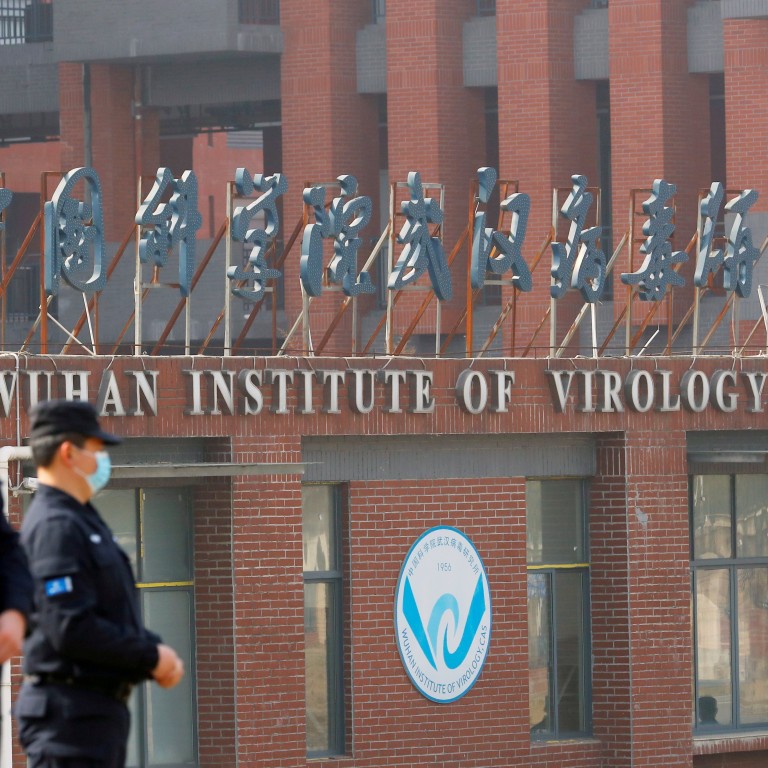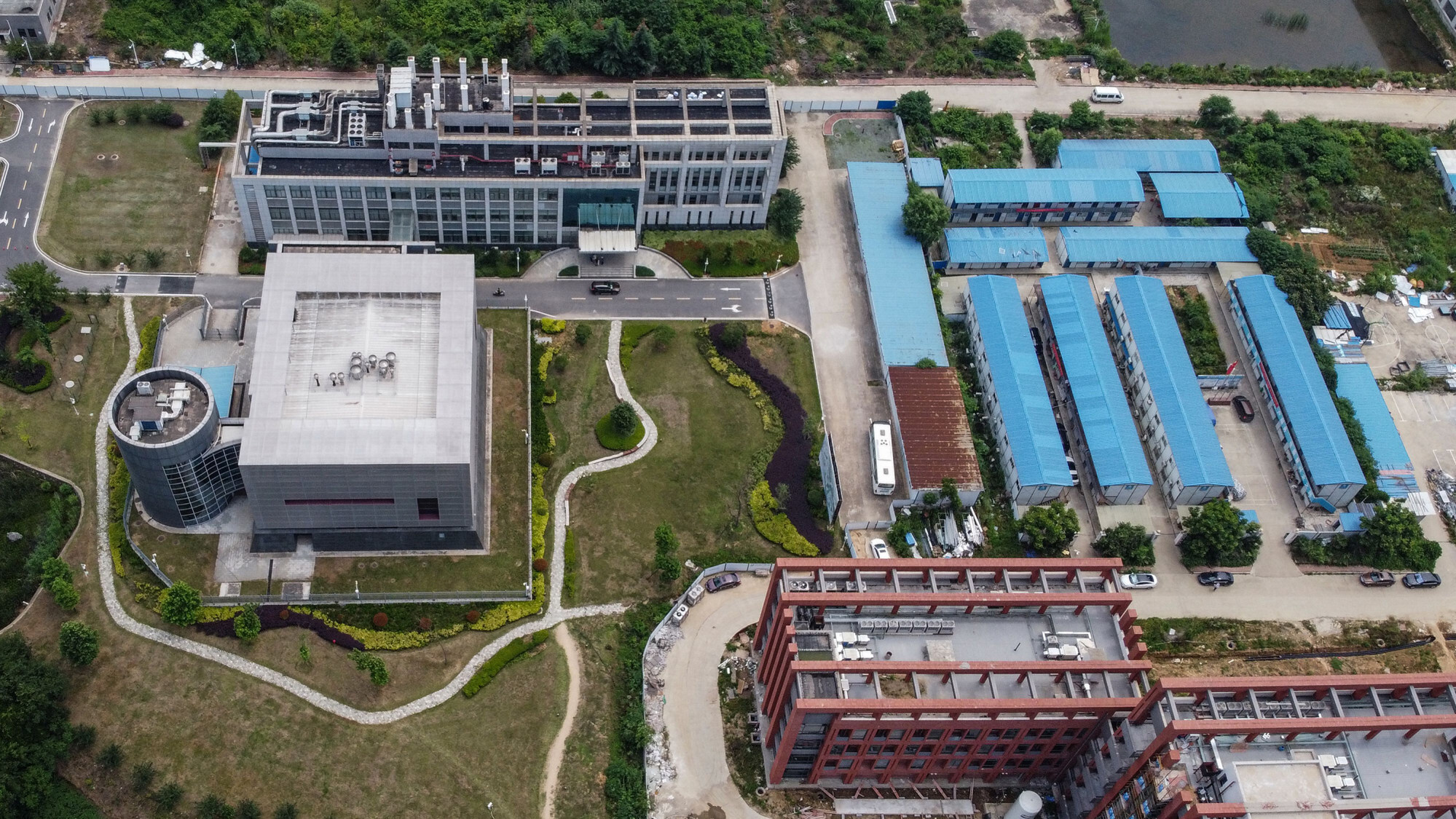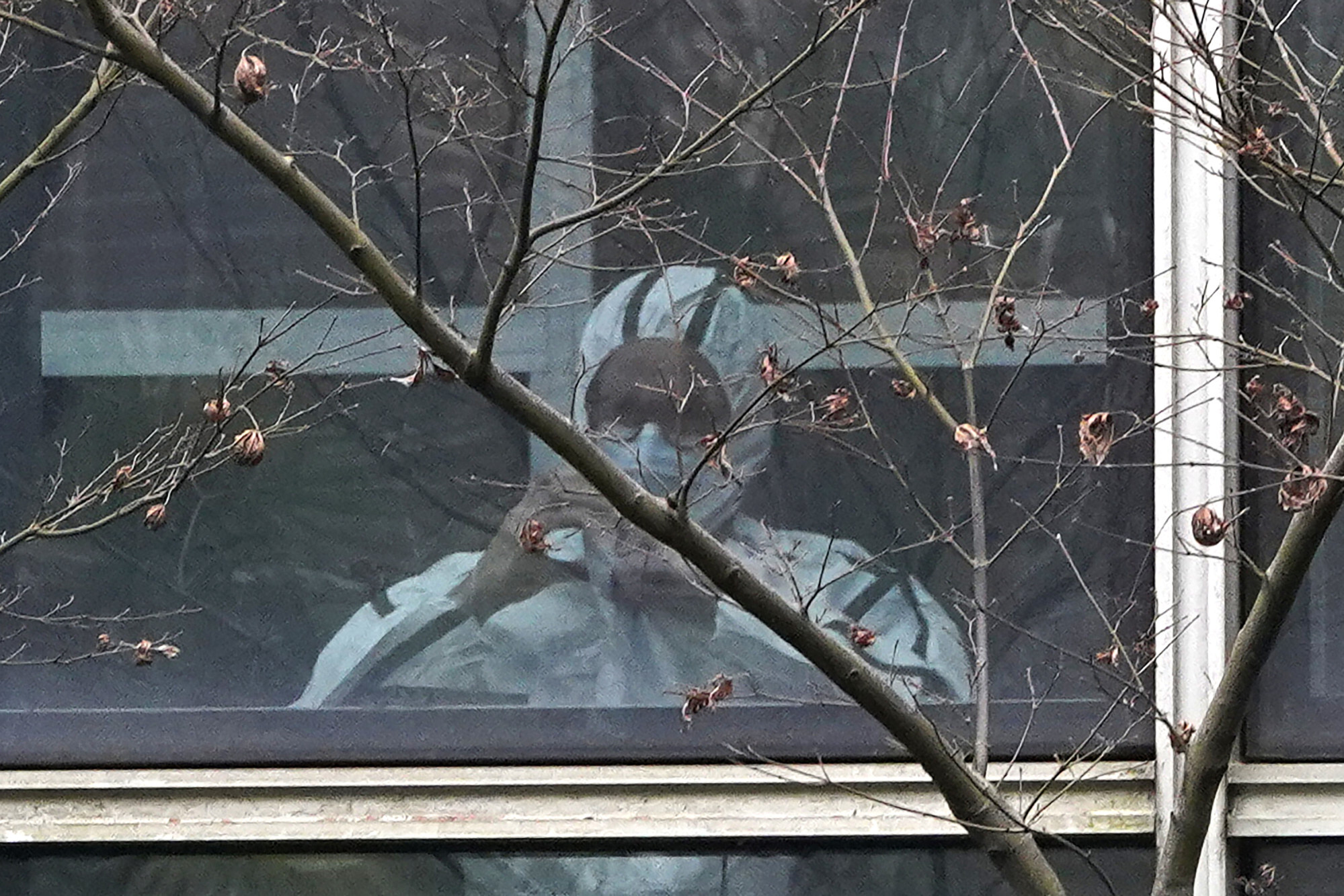
Exclusive | ‘0 per cent’ chance: former French official who oversaw safety standards at Wuhan lab dismisses leak theory
- Biosecurity expert Gabriel Gras supervised the construction and accreditation of the Wuhan Institute of Virology’s BSL-4 laboratory in 2017
- He says he has ‘no doubt’ about the safety of the facility, despite growing scrutiny over the possible role of a lab accident in the origins of Covid-19
In his first interview with English-language media, Gabriel Gras, a virology researcher and biosecurity expert who was employed as a technical expert at the French embassy in China, said he did not believe SARS-CoV-2 originated or escaped from the WIV.
Gras said he had “no doubt” about the safety of the institute’s biosafety level 4 (BSL-4) laboratory, the first of that security specification to be built in China, after supervising its construction and accreditation by way of a collaboration between the French government and the Chinese Academy of Sciences.
Coronavirus origins: how unseen Wuhan research notes could hold the answers – and why lab-leak rumours refuse to die
While a lead WIV researcher has said the institute’s work on bat coronaviruses did not take place at the BSL-4 facility – which is required for the world’s deadliest pathogens – it has been pulled into debates about a “lab leak”.
According to US State Department memos obtained by The Washington Post last year, United States officials in 2018 noted a lack of trained staff at the then-new laboratory, raising questions about its operations.
Gras, who worked at the WIV between 2012 and 2017 – during which he says he gained insight into the institute’s staff and operations – said it would make little sense for researchers to use a BSL-4 facility to study a coronavirus due to cost and time considerations, as a BSL-3 laboratory was usually used. He also vouched for the institute’s standards and the professionalism of its researchers.

“I do not have any problem working in this [BSL-4] lab,” said Gras, who worked in the immunovirology division of the French Alternative Energies and Atomic Energy Commission before joining the foreign service. “I would not feel in danger. The lab is of a high standard. It was my daily work to verify this, and as I had the background of safety [consultant], lab designer, and virology scientist, I was 100 per cent involved.”
Gras put the chance of a leak from the BSL-4 laboratory at “zero per cent”, and the possibility of a pathogen escaping from the institute’s BSL-3 laboratory on another campus in Wuhan at between 1 per cent and 3 per cent, based on his familiarity with that facility and standard operations at that biosafety level. He noted, however, that he had not been to the laboratories since 2017.
Multiple media reports in recent weeks have also cited anonymous former and current US government officials discussing intelligence that three WIV researchers fell ill in the month before the outbreak in Wuhan – raising questions about the institute’s denial of any unusual illnesses that could have been the start of the pandemic.
Hearing loss, organ failure, fungus, gangrene: as India’s coronavirus hell eases, new threats emerge
The Sunday Times last week reported that British intelligence agencies now believed it was “feasible” the virus had escaped from a laboratory.
Gras, whose role was identified by This Week in Asia following research into France’s involvement with the laboratory project, said the renewed controversy was ultimately irrelevant because he had little doubt the virus was natural, and any accidental leak would have required the laboratory to have a closer relative of the virus than any known to be in its stores.
“I am 100 per cent sure it is not constructed, developed in a lab,” said Gras, who was in charge of French-Chinese cooperation on emerging infectious diseases and left the government in 2017. “When you see this virus, all the scientists in the world that looked at this virus will say the same thing, as the WHO said: this virus is a natural virus.”
Instead, he said, discussions about laboratory safety were being conflated with the separate issue of controversial research involving the manipulation of viruses.
Scientists who analysed the virus have largely concluded it most likely evolved naturally, passing from a bat to humans, possibly through an intermediary animal. But some have raised the possibility it was genetically manipulated.
In a study published in Nature Medicine in March last year, an international team of prominent virologists found the genome sequence of SARS-CoV-2 provided “strong evidence” the virus had not been artificially manipulated and was “most likely the result of natural selection”.
WHO’s coronavirus detectives look to Wuhan market as undisclosed map surfaces
But notable figures have disputed this conclusion, including David Baltimore, a Nobel Prize-winning virologist. In an influential essay by science writer Nicholas Wade that was published last month, Baltimore described the presence of a furin cleavage site in the coronavirus’ spike protein – a feature that makes it easier for the virus to enter cells – as a “smoking gun” that challenged the natural origin explanation.
However, he later told the Los Angeles Times that he regretted using the phrase, and meant to say the furin cleavage site was a “striking suggestion of a possible origin of the virus”.
In a letter published in Science journal last month, 18 prominent scientists called for serious examination of both “natural and laboratory spillovers” through transparent, objective, data-driven investigation.
The lab-leak theory does not necessarily imply genetic manipulation, but considers whether an accident could have resulted in a naturally occurring virus infecting researchers.
The WIV has staunchly denied it could have been the source of the outbreak. It has so far refused to open its files to independent investigators, and Beijing has likewise rebuffed such calls, saying the US should allow probes into its high-containment facilities.

The institute’s BSL-4 facility, which was built using French technology and expertise at a cost of about ¥300 million (US$46.9 million), officially opened in 2017 with a ribbon-cutting ceremony attended by then French prime minister Bernard Cazeneuve. In April last year, President Emmanuel Macron’s office said there was “no factual evidence” to support news reports at the time linking the facility to the pandemic.
Gras said the Chinese authorities had not impeded his work, although Chinese firms involved in the construction had on a number of occasions attempted to use cheaper materials to cut costs – which he overruled.
The expert in laboratory design also defended Shi Zhengli, the head of the WIV’s Center for Emerging Infectious Diseases, who has come under growing scrutiny for her study of coronaviruses in bats, including manipulation of pathogens to understand if they can infect human cells.
Shi has denied the possibility Covid-19 could have originated in her lab, describing the “sleepless nights” she spent worrying about the possibility of a leak before determining the sequence of the virus did not match any kept in her lab.
In February last year, Shi’s team disclosed that the lab was in possession of a virus named RaTG13 that was 96.2 per cent identical to SARS-CoV-2 – making it the closest-known relative of the virus that caused the pandemic, though too distant to be a direct ancestor.
Critics have speculated the lab could house other viruses that have not been disclosed, a suspicion fuelled by the release of a US State Department “fact sheet” during the final days of the Trump administration that claimed classified military research had been carried out at the institute.
Shi has also denied that military experiments have taken place in her lab.
Gras, who got to know Shi personally during his time in China, said he did not believe the scientist would lie or conceal the nature of her research.
“She is just like any international scientist that I know,” he said. “So she wants to publish. So as far as I know, when she has a new virus, the new virus is in the database and it is published, if it is interesting [enough] to be published. So I have absolutely no information or impression or feeling or whatever that she would hide something.”
Gras said he believed the discussion about the pandemic’s origin had become politicised. “For me this is [no longer] a scientific issue,” he said.
Additional reporting by Simone McCarthy


